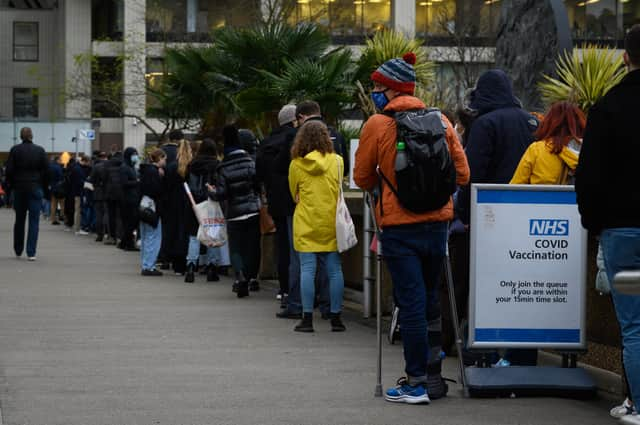Coronavirus UK data: How are the national and local Covid 19 statisitics gathered and what do they mean?


From the start of 2020 there have been plenty of statistics shared by the Government and local councils inorder to inform the public on the spread of Covid 19, and with the increased worries surrounding the Omicron variant, we are seeing further data sets being shared and made available.
But what do the number being shared show? There are enough statistics and data to boggle the mind but were here to explain what it all means, and how these numbers are gathered and shared.
Advertisement
Hide AdAdvertisement
Hide AdAll official Coronavirus information is published by either the Government, local authorities or the NHS.
How are coronavirus related deaths counted?
Any death which is in both local and national data across the UK is only included if Covid 19 is mentioned on the death certificate of the deceased. According to the Office for National Statistics, if a death certificate does mention Covid 19, it will not always be the main or underlying cause of death, but it may be a contributory factor.
A death will be applied to the data on the day of the passing rather than the day of the certificate being published. This is why the full number of deaths on a certain day can change a couple of days after the initial date.
Another reason for different numbers being reported comes from the 4pm cutoff when data is compiled and made public. Any deaths from 4pm until midnight will be considered to be on that specific day, but will not be a part of the data which is sent to publishers on the same day.
How are coronavirus hospitalisations measured?
Advertisement
Hide AdAdvertisement
Hide AdAccording to NHS England, there is simply one way someone can be described as being a Covid 19 patient. This is if the patient has been admitted following a positive PCR test within the last 14 days while anyone who has been diagnosed due to an X-ray and assessment rather than a test is treated as a suspected Covid 19 patient.
NHS trusts have also been told to report a patient as a confirmed Covid 19 patient for as long as they are being treated for the imapacts and symptoms of the virus.
Anyone who is admitted to hospital for non-Covid reasons or has been found to be positive with the virus over 14 days before they were taken in should not be treated as a covid patient.
How do local authorities know how many confirmed Covid cases are in each area?
Advertisement
Hide AdAdvertisement
Hide AdAs soon as the testing programme began in the UK, the amount of confirmed positive cases rose, as was expected with the public being able to find out at any given time whether or not they have the virus. These localised numbers have been published and made available by local authorities.
As part of the test registration process, anyone who is taking a test needs to input certain information such as their name, address and age. It is this information which is used to identify areas of high or low cases as well as age groups who are more likely to test positive or negative.